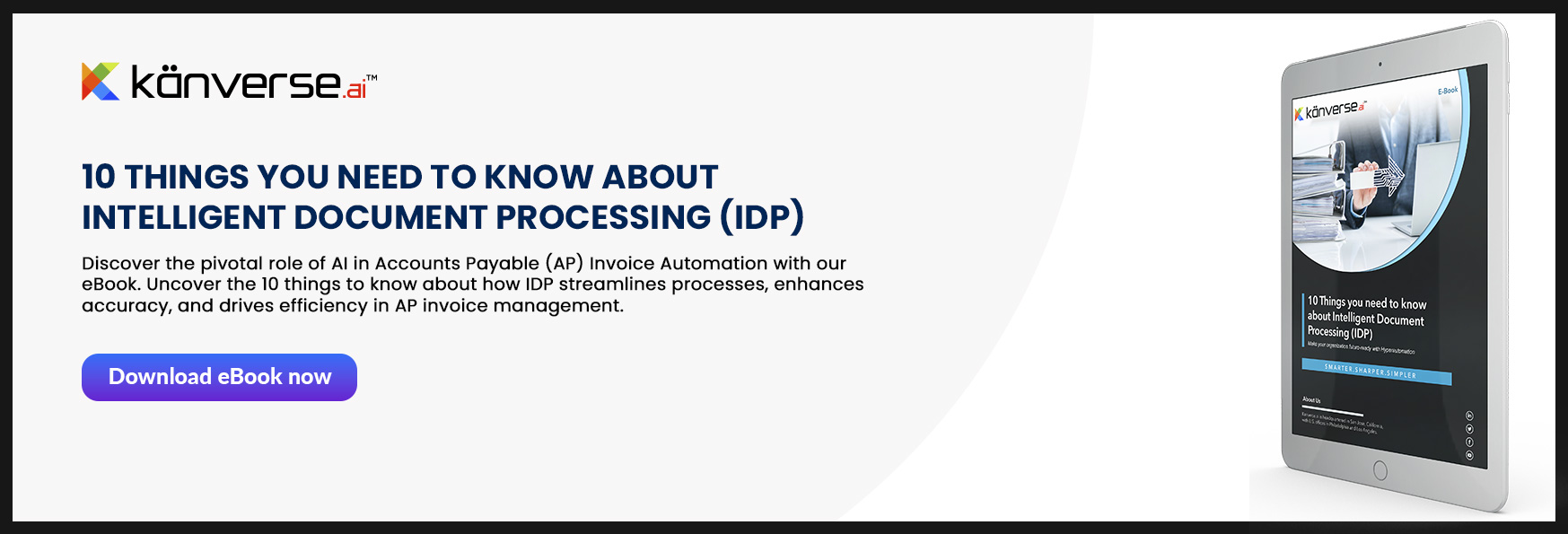
IDP Use Cases in Insurance
Rising consumer expectations for a better digital experience has put P&C insurers under tremendous pressure. The industry is witnessing an increasing need for innovative solutions and plans to scale various AI and Hyperautomation initiatives. The way insurance companies handle their enormous volume of documents is being revolutionized by Intelligent Document Processing (IDP), a solution that blends artificial intelligence and machine learning.
Technological innovations are essential for effective operations and preserving a competitive edge in the rapidly changing insurance sector. Several insurance processes continue to be heavily manual and cause delays across the value chain. Insurance companies can improve customer service, increase accuracy, and streamline workflows by utilizing IDP to automate document processing tasks. Automating the insurance document intake process is intricate and demands significant human labor. Nonetheless, you can always count on artificial intelligence (AI) powered insurance document processing software to automate data extraction, validation, and publishing.
Let's look at some of the significant IDP use cases in insurance, showing how this cutting-edge technology can completely transform document processing in the insurance industry.
New Submission Intake
Extracting raw data from sources like emails, ACORD forms, supplemental forms, custom submissions, and quotation slips into usable data by automating documentation intake for new brokers' submissions. This will allow underwriters to make essential judgments without performing extra back-office labor.
Loss Run Reports
A loss run is a report generated by your insurance company showing the claim activity on each of your insurance policies. Insurance companies can offer new clients the best possible policy and price with valuable information from loss run reports. Incoming forms can vary in format and contain complex claims data that require employees to spend hours simply entering the crucial information from the documentation into other underwriting and risk-management systems.
Statement of Values
A statement of values or SOV is a report the insured submits to an insurer that helps determine the insurance premium. The SOV tells just how much a property is worth so the underwriter knows how the premium should be calculated. Customer statements of value (SOV) come in complicated, unstructured formats requiring teams to work through data input and reconciliation processes. To guarantee that the right coverage is recognized for each insurance, accuracy is essential to this work.
FNOL
The first notice of loss (FNOL) is the first report you make to an insurance provider following the loss to an asset covered by an insurance policy. FNOL is normally the initial step in the claims process. Claims representatives obtain supporting documentation and claim data via customer portals, phone conversations, emails, faxes, and physical mail. Since documents tend to differ from customer to customer, it has historically been necessary for people to read them carefully for information and to look out for any potential errors or signs of fraud.
Benefit Plans
Employee benefits insurance plan is an insurance plan offered by an employer to its employees. It provides health and life coverage to its employees in the case of medical or other kinds of unforeseen emergencies. Insurance companies are under pressure to live up to rising customer expectations, particularly in benefit approval and user onboarding. Accuracy and speed are essential for the best possible insurance customer experience. Naturally, it's preferable to record important information as soon as it becomes available and avoid requiring members to resubmit.
Table Of Contents
Related Blogs
About Kanverse.ai
Kanverse brings you the best-in-class IDP software to automate the submission intake process for insurers, from ingestion, classification, extraction, and validation to filing. Extract data from a wide gamut of documents with up to 99.5% accuracy using its multi-stage AI engine. Say goodbye to manual entry, reduce cycle time to seconds, optimize cost by up to 80%, minimize human error, and turbocharge your team's productivity.


